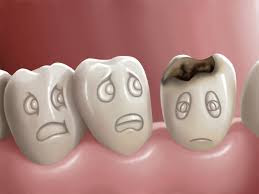Dental veneers are good choice to improve the teeth' appearance
What are porcelain veneers? veneers are thin pieces of porcelain used to remake the normal look of teeth. It is used to treat several different cosmetic concerns, including chipped, broken, discolored, or smaller-than-average teeth. It helps you achieve the look that you desire. Veneers will transform your smile into a bright, straight, natural-looking smile. Porcelain veneers are the perfect choice for covering up cracks, and issues with teeth. These veneers are custom-made and fitted to your teeth. Veneers are easily customizable and can do more than change the color of your teeth. In the first step, the dentist removes a small amount of enamel from the front and sides of the teeth. This makes room for the veneers so that your teeth look natural. The dental specialist makes an impression, or mold, of the prepared teeth. The dental specialist also selects the veneer shade that will be best for your smile. The model is sent to a dental lab that custom-makes the veneer...
